
Overview
Urinary bladder cancer in dogs and cats is fairly uncommon, although certain breeds such as the Airedale terrier, Beagle, Collie, and Sheltie have a higher incidence than other breeds. Tumors are typically transitional cell carcinomas and are fairly aggressive, spreading within the bladder and metastasizing to adjacent lymph nodes, as well as lung and bone. Typical location for these tumors is the trigone area at the neck of the bladder, where it joins with the urethra. Symptoms of bladder cancer in small animals include difficulty in passing urine, dribbling urine, and bladder infections due to failure to empty the bladder.
Unlike humans, in which bladder cancer is often discovered in situ, most cases of bladder cancer in dogs and cats are discovered when tumors are fairly large, have already invaded the muscular layer of the bladder, and are obstructing the urine outflow from the bladder. At this advanced stage, surgery is usually not successful due to the aggressive nature of these tumors, as well as the location, since the neck of the bladder is essential for continence and micturation.
Conventional treatment options for dogs include surgery and chemotherapy. Median survival time with surgery is 86 days, with tumor recurrence common. Median survival time with piroxicam (oral NSAID that reduces inflammation and slows tumor growth) is 180 days. Median survival time with aggressive chemotherapy is 350 days with only a 35 % response rate. Side effects from the treatment are common and cost is often prohibitive. Without any treatment most animals are euthanized within a few weeks of diagnosis because of the inability to pass urine.
Feline bladder cancer is less common than canine and not as well understood. The prognosis is worse for cats, with a median survival time with aggressive treatment less than 7 months.
This article describes two dogs and one cat who were prescribed the remedy Calcarea carbonica after diagnosis of advanced bladder cancer as described above. All three animals regained the ability to urinate immediately after starting the remedy, and experienced a good quality of life free of symptoms for many months.

Boru was adopted by his owner in 2009 at the age of 12 years. In December 2010, Boru was diagnosed with bladder cancer after repeated bouts of blood in the urine, straining to urinate and recurrent bladder infections. Meloxicam and antibiotics were prescribed, but no improvement in either straining or blood in the urine were noted after three weeks of treatment. Calcarea carbonica 30C was prescribed once monthly. Symptoms resolved within days of the remedy. Repeat ultrasound in June 2011 was performed to assess tumor progression because an increased frequency of urination was observed. The original tumor had not increased in size, but a second tumor was found in the small intestine. This tumor appeared to arise from the muscular layer of the intestine and was thought to be a leiomyoma. Based on increased frequency of urination the potency of Calcarea carbonica was increased to 200C monthly. In September 2011, bloody urine and increased frequency of urination were again noted; potency of Calcarea carbonica was increased to 1M monthly. In December 2011, one year after diagnosis, Boru's owner opted for humane euthanasia due to deterioration in his overall health. Interestingly, his bladder symptoms had not recurred, but the tumor in the small intestine had progressed to obstruction and inability to eat.
Survival time after diagnosis: 1 year

In late August 2010, Kelly presented with symptoms of urinary accidents in the house and recurrent urinary tract infections. Ultrasound of the bladder showed a small irregular area of mucosa adjacent to the trigone (neck) of the bladder. At that time, Kelly's owners opted for conservative treatment with piroxicam and antibiotics. Since Kelly's cancer was diagnosed early, this controlled his symptoms for the next eight months. In April 2011, Kelly started to experience more difficulty urinating as well as difficulty defecating.
In August 2011, Kelly's family moved to Maine and he was seen at our hospital. Kelly's symptoms on presentation consisted of severe difficulty in passing urine, dribbling of urine, difficulty and straining to defecate with soft stools, and water dripping from his nose when straining to urinate and defecate. On physical examination, Kelly had a palpable bladder mass as well as a rectal mass on digital rectal exam. The size of the bladder tumor was estimated to be about 4 cm with a slightly larger rectal mass. It was apparent that the bladder tumor had grown substantially since diagnosis and was now obstructing the urinary outflow tract. In addition, it had metastasized to the lymph nodes in the sublumbar area, obstructing fecal passage in the colon. Kelly's medications at the time consisted of piroxicam, prazosin (to try and help assist in urine outflow), and sucralfate (to protect the stomach lining from ulceration on the piroxicam). A radiograph showed a moderate sized bladder after Kelly had attempted to empty his bladder. Urinalysis showed blood in the urine but no infection.
Kelly's owners were considering euthanasia, but were interested in anything additional they could do to help ease his symptoms and improve his quality of life. Calcarea carbonica 30C was administered in the office. For six days after this dose, Kelly’s energy increased while his difficulty urinating and defecating decreased. On the seventh day, Kelly was observed to be straining again and exhibiting signs of discomfort. Calcarea carbonica 30C was prescribed once weekly. Kelly did well until November 2011m when his owners called to report he was starting to strain and act uncomfortable again. Calcarea carbonica potency was increased to 200C weekly. Kelly improved once the potency was increased. This improvement persisted until January 2012, when Kelly once again exhibited difficulty urinating and defecating, as well as trouble rising and intermittent leakage of urine. Calcarea carbonica 1M was prescribed weekly and Kelly did well until March 2012.
In March 2012, Kelly's owners reported that he seemed to be in pain, groaning at times and showing difficulty in lying down. New symptoms of restlessness and increased thirst with decreased appetite were noted. Modalities noted at that time were amelioration of symptoms after a bowel movement, aggravation at 6-8 am and 8-10 pm, amelioration from pressure on the hind end, and better with movement. Based on these symptoms and the observation that Kelly was nearing the end, the remedy was changed to Arsenicum 30C daily. Over the next four months, Kelly's symptoms were palliated by this remedy, with necessary increases in potency periodically. In July 2012, Kelly was humanely euthanized.
Survival time after diagnosis: 2 years
 Bebe -Airedale Terrier, DOB 8/30/2002
Bebe -Airedale Terrier, DOB 8/30/2002
Bebe was adopted by her current owner in 2009. In February 2012, Bebe exhibited symptoms of increased frequency of urination, straining, and persistent urinary tract infection. In March 2012, bladder ultrasound revealed a large bladder tumor in the trigone area obstructing the neck of the bladder, as well as partially obstructing both ureters as they entered the bladder. As a result, the renal pelvis of the left kidney showed mild dilation, indicating that urine was backing up into the kidney from the bladder. Renal values were normal at the time but it was feared that kidney failure was imminent due to the size and location of the bladder tumor.
Calcarea carbonica 30C was given in the office on March 7, 2012. One week later, Bebe's owner reported that her urine flow was much better and she was no longer straining to urinate. Urinalysis at that time showed resolution of infection. On April 13, 2012 Bebe had gained weight but was observed to have decreased frequency of urination. Urinalysis showed blood and recurrence of infection. Calcarea carbonica 30C was repeated. Bebe did well for the next month, at which time her owner thought she was taking longer to empty her bladder. A follow up ultrasound in May 2012 showed a slight increase in tumor (4 cm x 4.2 cm) size, but no progression in obstruction of the ureters. Calcarea carbonica 30C was repeated. Three weeks later, Bebe's owner observed that she was having difficulty initiating a urine stream. Calcarea carbonica 200C was administered, to be repeated as needed. The straining resolved, responding to Calcarea carbonica 200C every 2 weeks, until July 2012 when the frequency was increased to weekly. Bebe did well until October 2012, when her owner observed her to only release a few drops of urine at a time with much straining. Calcarea carbonica potency was increased to 1M and improvement was noted within 24 hours. This was repeated at three week intervals until mid November, when symptoms of straining to urinate recurred. Calcarea carbonica LM 1 daily was prescribed with improvement within 48 hours.
One month later, Bebe's owner reported that she was doing very well on the LM, once she got over her fear of her owner banging the bottle and her dislike of the taste (it had no alcohol in it, just water!) Bebe has continued to do very well on Calcarea carbonica LM daily. As of this report, May 2013, Bebe continues to be symptom free and have a good quality of life.
Survival time after diagnosis: 15 months at present
Discussion
Arguably, prescribing based on pathology is allopathic in nature and contrary to homeopathy. Interestingly, pathology of the bladder is found in Kent's repertory. The rubric bladder, tumors has only one remedy: Calcarea carbonica. Certain other physical symptoms are common to these three cases, which further justifies the prescription of Calcarea carbonica. These include straining to urinate, difficulty in passing urine, increased frequency of urination, bloody urine, and tenesmus persisting after urination. In addition, all three of these animals exhibited characteristics typical of calcarea carbonica, such as soft, flabby bodies, and mild temperaments with extreme reliance on their owners.
Calcarea carbonica is one of the best known and most prescribed remedies in the materia medica. Proven by Hahnemann, Calcarea carbonica is lime from the middle layer of the oyster shell. Oysters use their shell to protect their soft, delicate body. Individuals who need this remedy are often soft and sensitive, and rely on the safety provided by their home or family. Calcarea carbonica types are often stout, with soft, flabby connective tissue, and an equally soft, usually good-natured character. Calcarea carbonica is a constitutional remedy which is a polychrest and ranks at the head of the anti-psorics along with Sulphur and Lycopodium. The chief action of Calcium carbonicum is centered in the vegetative sphere, the keynote being impaired nutrition, the glands, skin and bone instrumental in the changes wrought. Calcium metabolism is active during childhood and becomes defective after middle age. A myriad of bladder symptoms are found in the materia medica for Calcarea carbonica. Tumors, especially of the trigone area, bloody and abnormal urine, and urging and straining with little production of urine are a few which are pertinent to this report.
In comparison to conventional therapy, homeopathic treatment with Calcarea carbonica had no side effects, rapidly alleviated symptoms, was much less expensive and invasive, and resulted in improved longevity in all three cases reported here.
Photos
Boru- cat, taken by Amy Allenwood; Kelly- Sheltie- taken by Gail Littlefield; Bebe- Airedale- taken by Julie Matthews
Julie Matthews
|
|
Three cases in companion animals: Calcarea carbonica and cancer of the bladderOverview Urinary bladder cancer in dogs and cats is fairly uncommon, although certain breeds such as the Airedale terrier, Beagle, Collie, and Sheltie have a higher incidence than other breeds. Tumors are typically transitional cell carcinomas and are fairly aggressive, spreading within the bladder and metastasizing to adjacent lymph nodes, as well as lung and bone. Typical location for these tumors is the trigone area at the neck of the bladder, where it joins with the urethra. Symptoms of bladder cancer in small animals include difficulty in passing urine, dribbling urine, and bladder infections due to failure to empty the bladder. Unlike humans, in which bladder cancer is often discovered in situ, most cases of bladder cancer in dogs and cats are discovered when tumors are fairly large, have already invaded the muscular layer of the bladder, and are obstructing the urine outflow from the bladder. At this advanced stage, surgery is usually not successful due to the aggressive nature of these tumors, as well as the location, since the neck of the bladder is essential for continence and micturation. Conventional treatment options for dogs include surgery and chemotherapy. Median survival time with surgery is 86 days, with tumor recurrence common. Median survival time with piroxicam (oral NSAID that reduces inflammation and slows tumor growth) is 180 days. Median survival time with aggressive chemotherapy is 350 days with only a 35 % response rate. Side effects from the treatment are common and cost is often prohibitive. Without any treatment most animals are euthanized within a few weeks of diagnosis because of the inability to pass urine. Feline bladder cancer is less common than canine and not as well understood. The prognosis is worse for cats, with a median survival time with aggressive treatment less than 7 months. This article describes two dogs and one cat who were prescribed the remedy Calcarea carbonica after diagnosis of advanced bladder cancer as described above. All three animals regained the ability to urinate immediately after starting the remedy, and experienced a good quality of life free of symptoms for many months.
Boru was adopted by his owner in 2009 at the age of 12 years. In December 2010, Boru was diagnosed with bladder cancer after repeated bouts of blood in the urine, straining to urinate and recurrent bladder infections. Meloxicam and antibiotics were prescribed, but no improvement in either straining or blood in the urine were noted after three weeks of treatment. Calcarea carbonica 30C was prescribed once monthly. Symptoms resolved within days of the remedy. Repeat ultrasound in June 2011 was performed to assess tumor progression because an increased frequency of urination was observed. The original tumor had not increased in size, but a second tumor was found in the small intestine. This tumor appeared to arise from the muscular layer of the intestine and was thought to be a leiomyoma. Based on increased frequency of urination the potency of Calcarea carbonica was increased to 200C monthly. In September 2011, bloody urine and increased frequency of urination were again noted; potency of Calcarea carbonica was increased to 1M monthly. In December 2011, one year after diagnosis, Boru's owner opted for humane euthanasia due to deterioration in his overall health. Interestingly, his bladder symptoms had not recurred, but the tumor in the small intestine had progressed to obstruction and inability to eat. Survival time after diagnosis: 1 year
In late August 2010, Kelly presented with symptoms of urinary accidents in the house and recurrent urinary tract infections. Ultrasound of the bladder showed a small irregular area of mucosa adjacent to the trigone (neck) of the bladder. At that time, Kelly's owners opted for conservative treatment with piroxicam and antibiotics. Since Kelly's cancer was diagnosed early, this controlled his symptoms for the next eight months. In April 2011, Kelly started to experience more difficulty urinating as well as difficulty defecating. In August 2011, Kelly's family moved to Maine and he was seen at our hospital. Kelly's symptoms on presentation consisted of severe difficulty in passing urine, dribbling of urine, difficulty and straining to defecate with soft stools, and water dripping from his nose when straining to urinate and defecate. On physical examination, Kelly had a palpable bladder mass as well as a rectal mass on digital rectal exam. The size of the bladder tumor was estimated to be about 4 cm with a slightly larger rectal mass. It was apparent that the bladder tumor had grown substantially since diagnosis and was now obstructing the urinary outflow tract. In addition, it had metastasized to the lymph nodes in the sublumbar area, obstructing fecal passage in the colon. Kelly's medications at the time consisted of piroxicam, prazosin (to try and help assist in urine outflow), and sucralfate (to protect the stomach lining from ulceration on the piroxicam). A radiograph showed a moderate sized bladder after Kelly had attempted to empty his bladder. Urinalysis showed blood in the urine but no infection. Kelly's owners were considering euthanasia, but were interested in anything additional they could do to help ease his symptoms and improve his quality of life. Calcarea carbonica 30C was administered in the office. For six days after this dose, Kelly’s energy increased while his difficulty urinating and defecating decreased. On the seventh day, Kelly was observed to be straining again and exhibiting signs of discomfort. Calcarea carbonica 30C was prescribed once weekly. Kelly did well until November 2011m when his owners called to report he was starting to strain and act uncomfortable again. Calcarea carbonica potency was increased to 200C weekly. Kelly improved once the potency was increased. This improvement persisted until January 2012, when Kelly once again exhibited difficulty urinating and defecating, as well as trouble rising and intermittent leakage of urine. Calcarea carbonica 1M was prescribed weekly and Kelly did well until March 2012. In March 2012, Kelly's owners reported that he seemed to be in pain, groaning at times and showing difficulty in lying down. New symptoms of restlessness and increased thirst with decreased appetite were noted. Modalities noted at that time were amelioration of symptoms after a bowel movement, aggravation at 6-8 am and 8-10 pm, amelioration from pressure on the hind end, and better with movement. Based on these symptoms and the observation that Kelly was nearing the end, the remedy was changed to Arsenicum 30C daily. Over the next four months, Kelly's symptoms were palliated by this remedy, with necessary increases in potency periodically. In July 2012, Kelly was humanely euthanized. Survival time after diagnosis: 2 years
Bebe was adopted by her current owner in 2009. In February 2012, Bebe exhibited symptoms of increased frequency of urination, straining, and persistent urinary tract infection. In March 2012, bladder ultrasound revealed a large bladder tumor in the trigone area obstructing the neck of the bladder, as well as partially obstructing both ureters as they entered the bladder. As a result, the renal pelvis of the left kidney showed mild dilation, indicating that urine was backing up into the kidney from the bladder. Renal values were normal at the time but it was feared that kidney failure was imminent due to the size and location of the bladder tumor. Calcarea carbonica 30C was given in the office on March 7, 2012. One week later, Bebe's owner reported that her urine flow was much better and she was no longer straining to urinate. Urinalysis at that time showed resolution of infection. On April 13, 2012 Bebe had gained weight but was observed to have decreased frequency of urination. Urinalysis showed blood and recurrence of infection. Calcarea carbonica 30C was repeated. Bebe did well for the next month, at which time her owner thought she was taking longer to empty her bladder. A follow up ultrasound in May 2012 showed a slight increase in tumor (4 cm x 4.2 cm) size, but no progression in obstruction of the ureters. Calcarea carbonica 30C was repeated. Three weeks later, Bebe's owner observed that she was having difficulty initiating a urine stream. Calcarea carbonica 200C was administered, to be repeated as needed. The straining resolved, responding to Calcarea carbonica 200C every 2 weeks, until July 2012 when the frequency was increased to weekly. Bebe did well until October 2012, when her owner observed her to only release a few drops of urine at a time with much straining. Calcarea carbonica potency was increased to 1M and improvement was noted within 24 hours. This was repeated at three week intervals until mid November, when symptoms of straining to urinate recurred. Calcarea carbonica LM 1 daily was prescribed with improvement within 48 hours. One month later, Bebe's owner reported that she was doing very well on the LM, once she got over her fear of her owner banging the bottle and her dislike of the taste (it had no alcohol in it, just water!) Bebe has continued to do very well on Calcarea carbonica LM daily. As of this report, May 2013, Bebe continues to be symptom free and have a good quality of life. Survival time after diagnosis: 15 months at present Discussion Arguably, prescribing based on pathology is allopathic in nature and contrary to homeopathy. Interestingly, pathology of the bladder is found in Kent's repertory. The rubric bladder, tumors has only one remedy: Calcarea carbonica. Certain other physical symptoms are common to these three cases, which further justifies the prescription of Calcarea carbonica. These include straining to urinate, difficulty in passing urine, increased frequency of urination, bloody urine, and tenesmus persisting after urination. In addition, all three of these animals exhibited characteristics typical of calcarea carbonica, such as soft, flabby bodies, and mild temperaments with extreme reliance on their owners. Calcarea carbonica is one of the best known and most prescribed remedies in the materia medica. Proven by Hahnemann, Calcarea carbonica is lime from the middle layer of the oyster shell. Oysters use their shell to protect their soft, delicate body. Individuals who need this remedy are often soft and sensitive, and rely on the safety provided by their home or family. Calcarea carbonica types are often stout, with soft, flabby connective tissue, and an equally soft, usually good-natured character. Calcarea carbonica is a constitutional remedy which is a polychrest and ranks at the head of the anti-psorics along with Sulphur and Lycopodium. The chief action of Calcium carbonicum is centered in the vegetative sphere, the keynote being impaired nutrition, the glands, skin and bone instrumental in the changes wrought. Calcium metabolism is active during childhood and becomes defective after middle age. A myriad of bladder symptoms are found in the materia medica for Calcarea carbonica. Tumors, especially of the trigone area, bloody and abnormal urine, and urging and straining with little production of urine are a few which are pertinent to this report. In comparison to conventional therapy, homeopathic treatment with Calcarea carbonica had no side effects, rapidly alleviated symptoms, was much less expensive and invasive, and resulted in improved longevity in all three cases reported here. Photos Julie Matthews |
Spectrum of Homeopathy
|
||||||




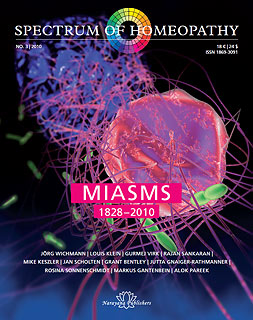


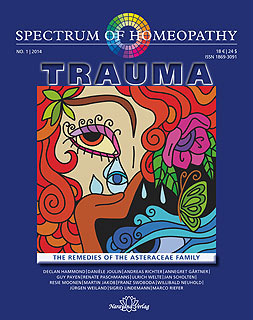
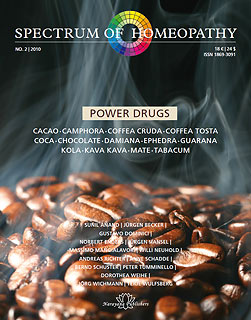
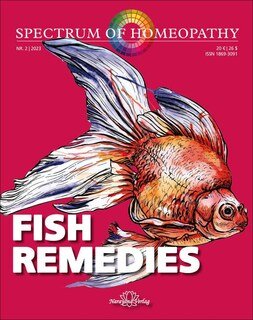

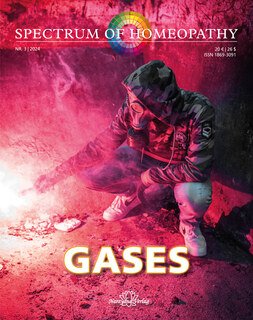
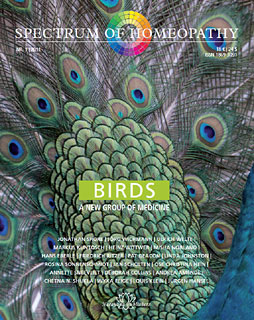
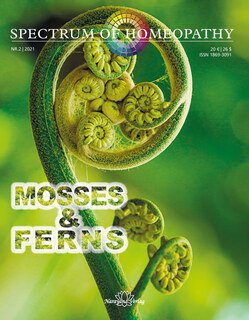

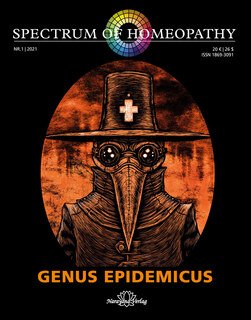


 back to list
back to list


